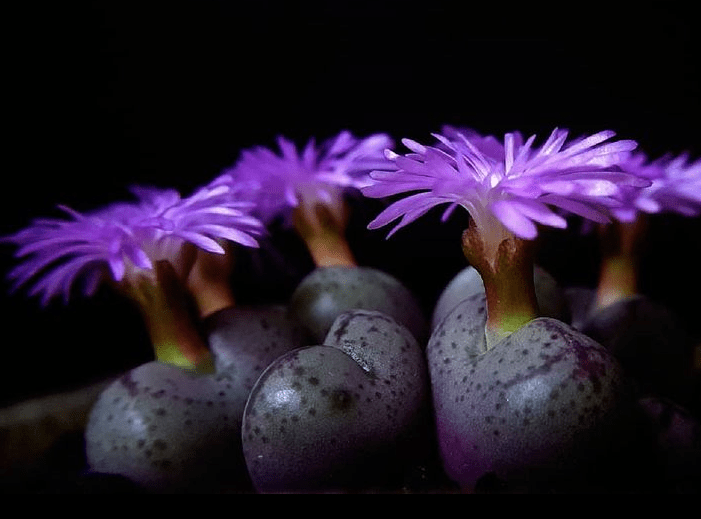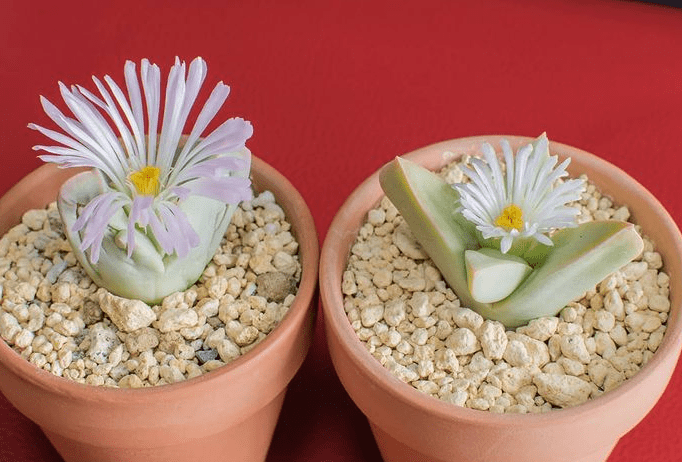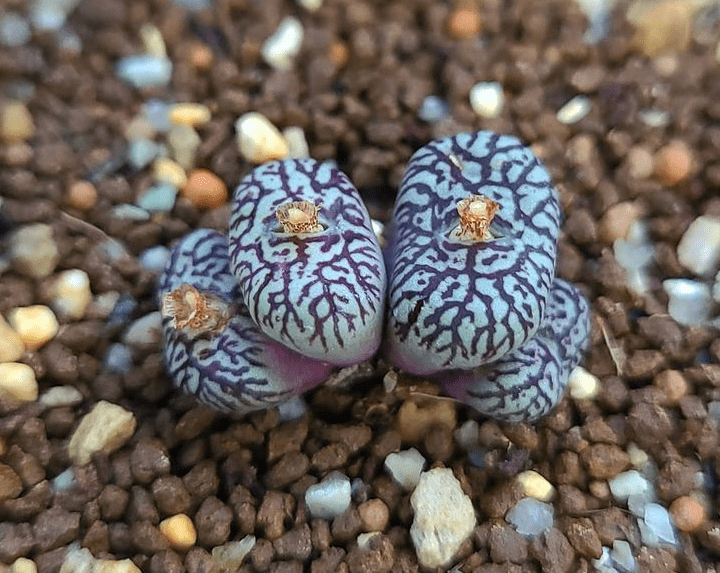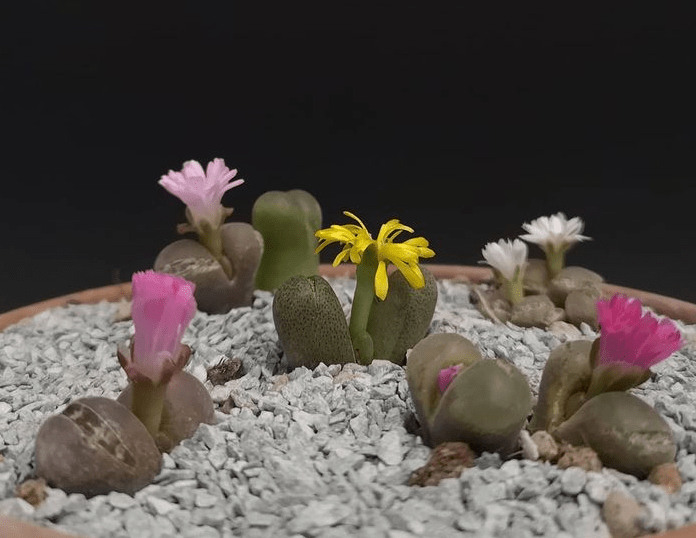How to grow and care for Conophytum plants?

Description
Conophytum is a genus of about 110 small perennial succulents belonging to Aizoaceae family. The plants of this genus are native to the Western part of South Africa and Southern Namibia. Known as living stones, knopies (buttons), waterblasies (water blisters), sphaeroids, conos, cone plants, dumplings, or button plants, Conophytums have conical leaves fused in pairs and constituting the body of the plant.
These leaves can have green to brown, red or gray color, and can be spotted, striped or without any patterns. Furthermore, the plants have fibrous roots, with a stem like Conophytum biloba or absolutely without any stem. Also, these robust caespitose (groundcover) plants produce actinomorphic, bisexual, yellow, white, orange-red or pink flowers during autumn and then capsular fruits that will only open in the rain. The largest species reach 5 to 7 cm (C. bilobum). The smallest does not exceed 5 mm in the adult state (C. achabense). All these species dry out in summer, forming a greyish protective layer.
How to grow for Conophytum plants?

Conophytum are winter growers that can be reproduced both by cuttings and seeds.
These tiny living stones are fairly simple to grow from seed, and reach about their full size in the first year. You have just to treat them like any other plant you sow indoors. The best moment to plant them is in Autumn. During this period, the seeds can grow because of the humidity of autumn and release new roots. The challenge is to keep them alive for years.
Conophytums can also be grown by cuttings. Take the cutting from a grown-up mother plant then take separate rooted leaves and repot each one into its own pot.
How to care for Conophytum plants?

Conophytums need special care because they grow in the opposite seasons of almost all other plants. Obviously, if you provide them with the right conditions, they will reward you with their unique shape, size, color and a proliferation of blooms in autumn.
Light
Conophytums need light during their growth process. The light needed will depend on the season of the year. Keep cool and shaded in summer and put them in a sunny position during winter.
Water
Watering is done in autumn and in winter but it is necessary to privilege light but repeated watering to large spaced waterings. Also, Conophytums go into deep dormancy in the spring, just when other houseplants start to grow well. So, while we water the other plants generously, we should no longer water the Conophytums.
Soil
Soil should be well-draind with mineral composition (sand, gravel..) and also small quantities of organic matter (potting soil, peat…)
Temperature
Conophytums are suitable for hot climate and even if some can withstand freezing temperatures under certain conditions, it is better, in cultivation, to keep them away from frost.
Fertilizing
Conophytums can stay for years in the same substrate, you just have to take care that it does not become too chalky. in short, fertilizing should be done in moderation.
Pets and diseases
Mealybugs are one of the most common pests. So, clean the plants a cotton pad or withe an insecticide. Moreover, Conophytums can be threatened by roots rot caused by excess of water, so it is necessary to water moderately.
Some Conophytum species

- C. bilobum
- C. braunsii
- C. calculus
- C. obcordellum
- C. ficiforme
- C. minimum
- C. flavum
- C. maughanii
- C. jucundum
- C. meyeri
- C. praesectum
- C. pellucidum
- C. truncatum
- C. minutum